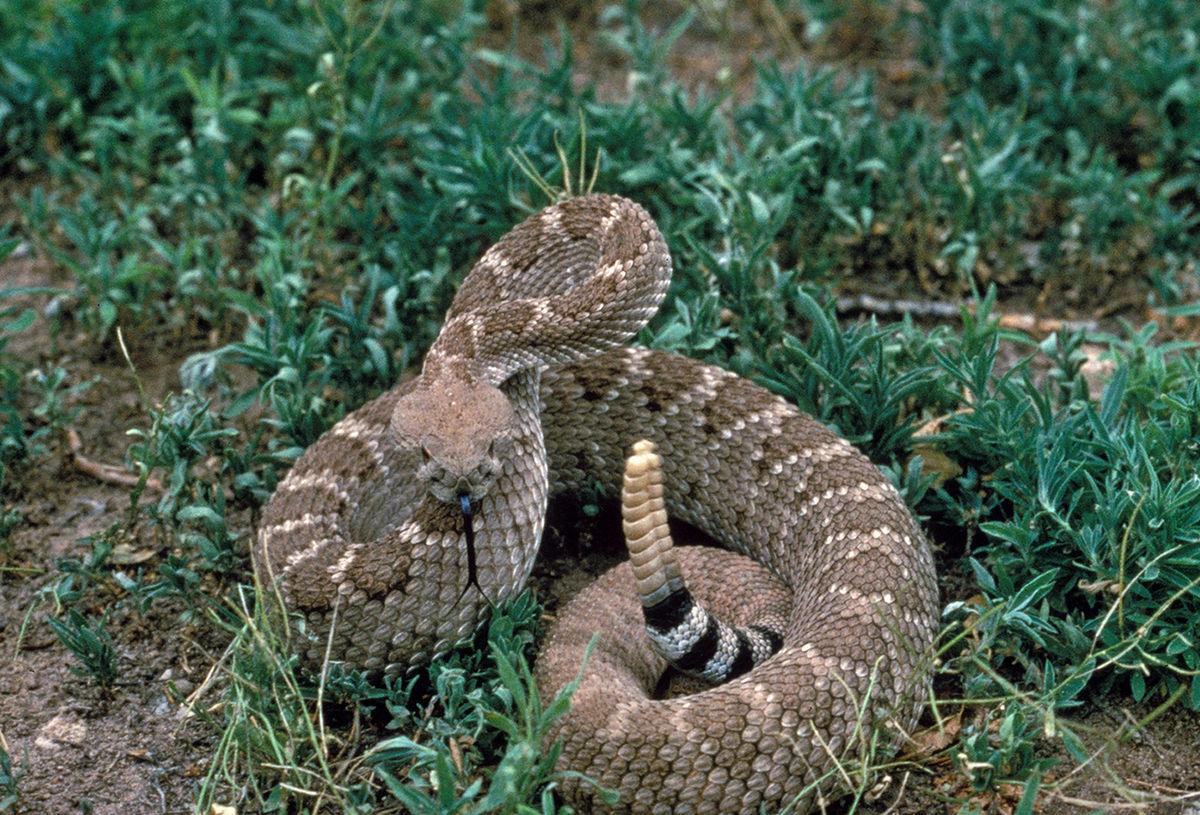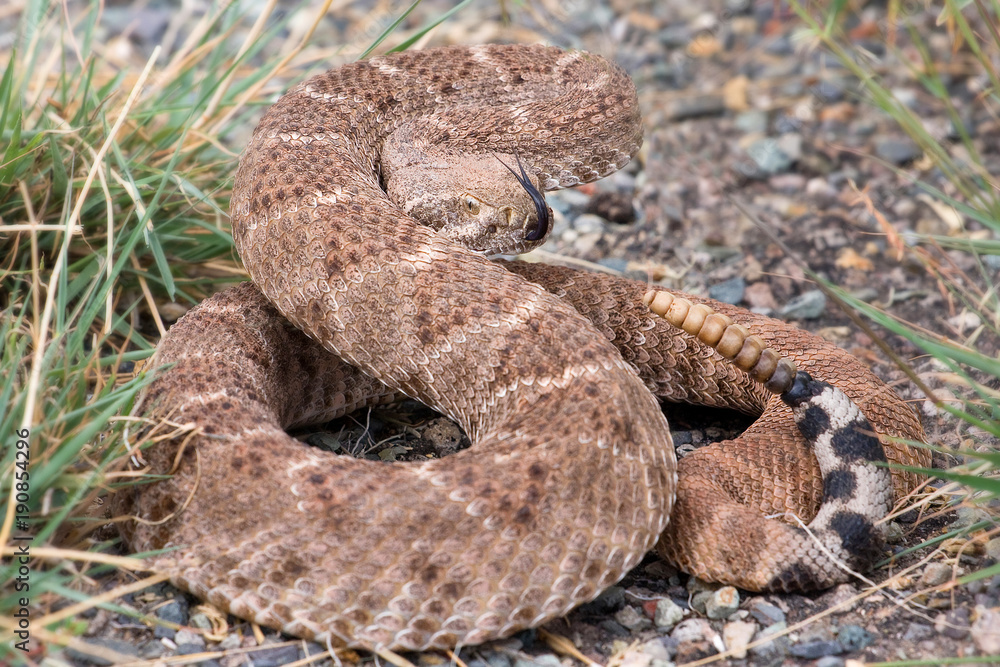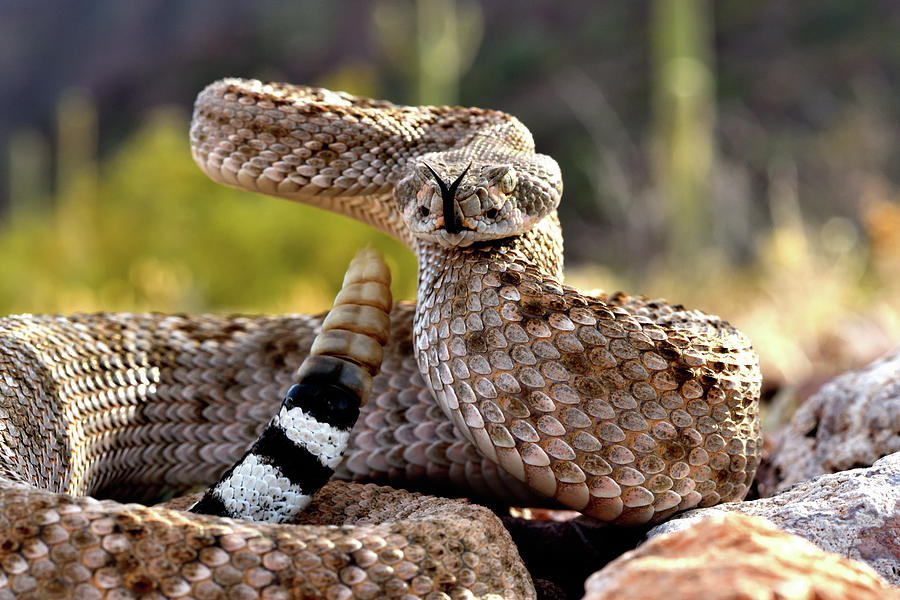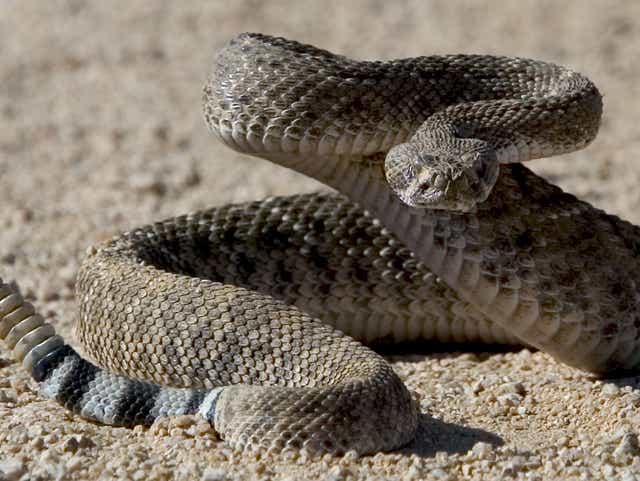Western Diamond Back Rattlesnake: Are Western Diamondback Rattlesnakes Aggressive?
As the name suggests, the western diamondback rattlesnake is found in western and central North America. This snake is a common sight in many parts of its range and is considered to be one of the most dangerous snakes in North America.
While these snakes are venomous, not all bites are fatal. With the right medical attention, most people who are bitten by a western diamondback rattlesnake will make a full recovery.
In this post, we’ll take a closer look at the western diamondback rattlesnake. We’ll discuss its physical features, its behavior, and what to do if you encounter one of these snakes in the wild. Stay safe out there!

Identifying Characteristics
The Western Diamondback Rattlesnake is a heavy-bodied snake with a triangular-shaped head. It has a rattle at the end of its tail. The snake’s back is covered in dark brown, diamond-shaped patterns. Its belly is yellowish-white.

Adaptations
The Western Diamondback Rattlesnake is adapted to living in dry, desert environments. It has heat-sensing pits on its head that help it to find warm-blooded prey. The snake’s rattle helps to warn predators and prey alike of its presence.

Habitat
The Western Diamondback Rattlesnake lives in dry deserts and grasslands of the southwestern United States. It can be found from Texas to California, as well as part of Mexico.
Range
The Western Diamondback Rattlesnake is found in the United States and Mexico.
Status of the Wild
The Western Diamondback Rattlesnake is not considered to be endangered.
Diet
The Western Diamondback Rattlesnake feeds primarily on small mammals, such as rodents and rabbits. It will also eat lizards, birds, and eggs.
Predators
The only predators of the Western Diamondback Rattlesnake are humans. Humans hunt these snakes for their skin and meat, which can be poisonous if consumed.

Home
The Western Diamondback Rattlesnake lives in the dry deserts and grasslands of the southwestern United States.
The Western Diamond Back Rattlesnake is an iconic snake of the American Southwest. With its distinctive diamond-patterned back, this snake is easy to identify.
The Western Diamondback Rattlesnake is also the largest rattlesnake in North America, with some individuals reaching lengths over seven feet!
Despite their large size and venomous bite, these snakes are an important part of the ecosystem and help to keep populations of rodents and other small mammals in check.
If you are lucky enough to see a Western Diamondback Rattlesnake in the wild, remember to give it plenty of space and never attempt to handle it.

A person’s life expectancy is defined as the number of years that a person lives.
The life expectancy of a Western Diamondback Rattlesnake is affected by many different factors. These factors can include things like habitat, diet, and predation.
In general, Western Diamondback Rattlesnakes tend to live relatively long lives in comparison to other snakes.
This may be partly due to their large size, which allows them to better avoid predators.
However, the most important factor determining a rattlesnake’s life expectancy is its habitat. Because they prefer dry desert environments with little vegetation cover, rattlesnakes are more susceptible to heat and dehydration than other types of snakes.
As such, they must make adaptations that allow them to survive in these harsh conditions. For example, Western Diamondback Rattlesnakes have heat-sensing pits on their head that help them to find warm-blooded prey.
Additionally, the snake’s rattle helps to warn predators and prey alike of its presence.
While the Western Diamondback Rattlesnake is not currently considered to be endangered, its population numbers are declining in some areas due to habitat loss and human hunting.
As a result, it is important to take steps to protect these snakes and their habitat. One way to do this is by educating people about the importance of these animals and why they should not be hunted.

Size
The Western Diamondback Rattlesnake is a large snake, with some individuals growing to be over seven feet in length.

In addition, there are some interesting facts.
The Western Diamondback Rattlesnake is the largest rattlesnake in North America.
It is also a venomous snake.
The Western Diamondback Rattlesnake’s bite can be deadly to humans if not treated immediately.

Reproduction is a legal term.
Rattlesnakes are viviparous, meaning they give birth to live young. Gestation takes approximately four to five months, after which the female gives birth to between four and twenty-five offspring. Newborn snakes are typically 10-15 inches (25-38 cm) in length.
Females reach sexual maturity at three to four years of age, while males mature slightly sooner, at two to three years old.
Mating usually occurs in the springtime. After a successful courtship ritual, the male and female will engage in copulation.
Fertilization is internal, and the eggs are retained inside the female’s body until they hatch. This process is known as ovoviviparity.
This means that the eggs develop and hatch within the female’s body, often within one to two months after fertilization has occurred.
Eggs are laid in clutches of around 10-50 eggs, which happens during late summer or early fall.
The eggs are left in a protected area where they incubate for about 60 days until hatching occurs in early spring. In some cases, males have been observed assisting females with guarding the developing clutch by coiling around them and warding off predators and other males that may try to approach their mate.
Young snakes emerge from the egg fully developed and complete with a set of venom glands. They are born with an instinctual need to find food as well as shelter in order to survive.
As they mature, rattlesnakes continue to grow in both length and girth. They typically reach their full adult size within three to five years.
Females are generally larger than males, reaching lengths of up to six feet (1.8 m), while males seldom exceed five feet (1.5 m). The largest recorded specimen was a female that measured 8.5 feet (2.6 m) in length!
Western diamondbacks can live for up to twenty-five years in the wild, though most only live an average of seven to ten years due to predation and other dangers such as vehicle strikes. In captivity, however, they have been known to live much longer lives, with some individuals living for up to forty years!
The following is a description
The Western Diamond Back Rattlesnake. The Western Diamondback Rattlesnake (Crotalus atrox) is a highly venomous pit viper species found in the southwestern United States and northwestern Mexico.
Adults usually grow to be between 3 and 5 feet in length, with the occasional individual reaching up to 6 feet. They are heavy-bodied snakes with a triangular head and a rattle at the end of their tail.
Their coloring can vary somewhat, but they typically have a brown or gray background with dark crossbands that are widest near the snake’s midsection.
The Western Diamondback Rattlesnake is considered to be one of the most dangerous snakes in North America due to its large size, potent venom, and aggressive temperament.
It is responsible for the majority of snakebite-related fatalities in the United States, and its venom can cause serious injury or death if not treated promptly with antivenom.
Despite these dangers, Western Diamondback Rattlesnakes play an important role in the ecosystem by helping to keep rodent populations under control.
The Western Diamondback Rattlesnake has a wide range throughout much of the southwestern United States and northwestern Mexico. It is found mostly in flat, arid regions such as deserts and grasslands, but it also inhabits some forested areas as well.
These snakes are solitary animals that are territorial and aggressive towards other individuals of their species. They typically feed on small mammals and lizards, ambushing their prey from underground burrows and striking quickly with their venom-loaded fangs.
The Western Diamondback Rattlesnake is a fascinating animal that is highly adaptable to its harsh desert environment.
Despite the dangers, it poses to humans, we should aim to protect this species so that future generations can continue to learn about and appreciate its important role in our ecosystem.
F.A.Q talk about Western Diamond Back Rattlesnake:
What is the toxicity of a western diamondback?
Western diamondback rattlesnakes, on the other hand, can deliver a significant quantity of venom in a single bite due to their huge venom glands and specially designed fangs. They are found in western North America. It is common for one bite to produce 250–350 mg of venom on average; however, a high of 700–800 mg has been recorded. Severe envenomation is very uncommon, but it can occur and may be fatal.
What is the world record for the biggest western diamondback rattlesnake?
A normal adult rattlesnake measures between 0.91 to 1.21 m (3-4 feet) in length – this is the longest rattlesnake in Texas, with a record length of more than 213 cm (84 in).
What is the difference between an eastern and a western diamondback rattlesnake, and how can you tell the difference?
They typically measure between 3.5 and 4.5 feet in height. It, like the eastern diamondback, has a characteristic diamond dorsal pattern; however, the pattern on the western diamondback is considerably lighter than the pattern on the eastern diamondback, which is much darker. Depending on the environment, colors may vary from pale tan to deep crimson.
What is the most endangered species of rattlesnake?
The Aruba Island rattlesnake is one of the most endangered species of rattlesnake in the planet! This species is rare because it can only be found in its natural habitat on the small island of Aruba, where only 25 square kilometers of habitat has remained unaltered for thousands of years.
Conclusion:
The Western Diamondback Rattlesnake is an apex predator found in the southwestern United States and Mexico. These snakes are not to be taken lightly; they can grow up to six feet long, weigh 10-15 pounds, and have a venomous bite.
While encounters with these snakes are rare, it’s important for people living in their range to be aware of them and take steps to avoid them. If you do come across a Western Diamondback Rattlesnake, give it space and remember that they are more afraid of you than you are of them.
And this article Westernencounters.com will help you answer questions about Western DiamondBack Rattlesnake:
- are western diamondback rattlesnakes aggressive
- western diamondback rattlesnake venom
- eastern vs western diamondback rattlesnake
- western diamondback rattlesnake texas
- largest western diamondback rattlesnake on record
- juvenile western diamondback rattlesnake
- diamondback rattlesnake colorado
- western diamondback rattlesnake bite



























